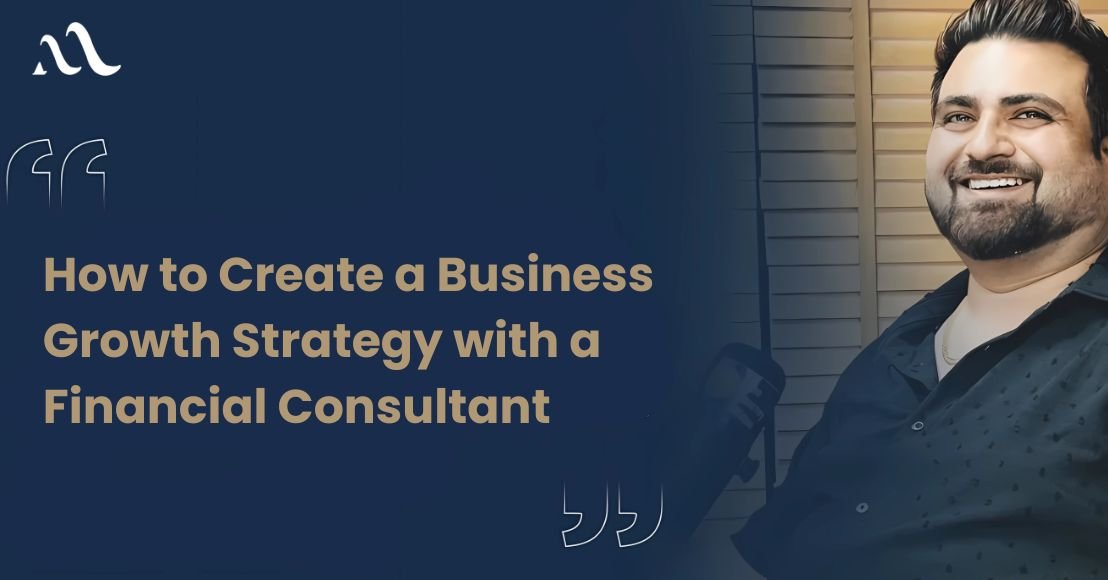Creating a business strategy is one of the most critical steps in building a successful company. Whether you are starting a new business or running an existing one, having a clear plan will help you move in the right direction. Without a strategy, the company can lose focus, waste resources, and not reach its goals.
In this article, we will explore how to create a business strategy, why it is important, and what steps you should take to create one that really works. We will also discuss business strategy, business strategy for business growth, and share practical tips on how to make your plan successful.
What is a business strategy?
A business strategy is like a plan that leads your business from where it is today to where you want it to be in the future. It covers your goals as you achieve them and the steps you need to take.
Think about it as a travel plan. If you want to get to the destination, you need instructions, the right vehicle, and a plan for the journey. Similarly, the company needs a strategy to achieve success.

Why is business strategy important?
Many businesses fail not because of a lack of effort, but because of a lack of direction. A business strategy will help you:
- Stay focused on your goals.
- Use sources wisely
- Stand above competitors
- Adapt to market changes.
- Grows in a sustainable way
Without a strategy, it’s like driving a car without knowing the goal.
Key elements of a good business strategy
Before you learn how to create a business strategy, it is important to understand its main elements:
- Vision and Mission – Your purpose and long-term goals.
- Target Market – The customers you want to serve.
- Unique Value Proposition – Why people should choose you.
- SMART Goals – Specific, Measurable, Achievable, Relevant, Time-bound.
- Action Plan – Step-by-step activities to achieve your goals.
- Resources – Money, people, and time allocation.
- Evaluation – Tracking progress and making improvements.

How to create an effective business strategy
A business strategy is a clear plan that takes your company from where it is today to where you want it to be in the future. It helps you stay focused, use resources wisely, compete with others, and grow sustainably. Without a strategy, your business can lose direction, waste resources, and miss opportunities.
A strong strategy includes your vision, target market, unique value, goals, action plan, resources, and methods for tracking progress. Following a structured approach will ensure your business stays on the path to success.
A step-by-step process for creating a business strategy
- Define vision and mission: Decide why your business exists and what it wants to achieve in the next 5-10 years.
- Identify your target market: Find out who your customers are, what problems they face, and how you can solve them.
- Analyze competitors: Learn from competitors’ strengths and weaknesses and offer something unique.
- Set SMART goals: Set goals that are specific, measurable, achievable, relevant, and time-bound.
- Create an action plan: Break down goals into tasks such as marketing campaigns, website improvements, or special offers.
- Resource allocation: Use your money, time, and team efficiently for maximum impact.
Monitor and adjust: Monitor progress regularly and update your plan as needed.
How to create a business strategy step by step
1. Define your vision and mission
Ask yourself: Why does my business exist? What do I want to achieve in the next 5-10 years?
Your vision and mission should inspire your team and provide clear direction.
2. Identify your target market
No business can serve everyone. Find out who your ideal customers are, what problems they are facing, and how they solve those problems with your product or service.
3. Study your competition
A major part of a business strategy for growth is understanding competitors. See their strengths and weaknesses. This will help you offer something better and unique.
4. Set the intelligent goals
Don’t just say, “I want to increase sales.” Instead, say, “I want to increase sales by 20%in the next 6 months.” Specific objectives facilitate progress measurements.
5. Create an action plan
Divide your goals into small tasks. For example, if your goal is to increase sales, your action plan may include:
- Opening a new marketing campaign
- Improving your site
- Offers discounts to loyal customers
6. Assign sources wisely
Each business has limited resources. Spend your money, time, and energy on things that bring the greatest value.
7. Watch progress and adjust
No strategy is perfect. Continue to check your results. If something doesn’t work, adjust your plan. Flexibility is the key to long-term success.

Business Strategy for Startups
For startups, the strategy is even more important because the resources are limited. Here are some tips to create a strong business strategy for startups:
- Keep your plan simple and focused.
- Solve the real problem for your target customers.
- Avoid unnecessary expenses at the beginning.
- Stay flexible because startups often require rapid changes.
Startups will succeed when they focus more on providing value than on doing everything at once.
Business strategy for established businesses
If you already have an established business, your strategy will look different. You should focus on:
- Extension to new markets
- Starting new products or services
- Building strong relationships with customers
- Using technology to improve efficiency
Businesses need a strategy that ensures continuous growth and stability.
Types of business strategies
There are different types of strategies that businesses use:
- Cost lines: Offering products at the lowest price.
- Differentiation: Offers unique products or services.
- Focus strategy: Focus on a specific group of customers or specialized markets.
Choose the one that matches your market goals and the market situation.

How to find out if your business strategy works
A successful strategy shows the results. You can try it:
- Check whether you meet your intelligence goals.
- Get positive feedback from customers.
- See the improvement in sales and profits.
If your strategy does not give results, do not be afraid to adapt.
Common mistakes to avoid in business strategy
Avoid these common mistakes when creating a strategy:
- Copying competitors without innovation
- Ignoring customer needs
- Setting unrealistic objectives
- Not to check the plan regularly.
Remember that the strategy is not just about planning – it is a performance.
Tools that can help you create a business strategy
There are useful tools to facilitate planning:
- SWOT analysis – identify strengths and weaknesses, opportunities, threats.
- Training analysis – study political, economic, social, technological, legal, and environmental factors.
- Business Model Canvas – a simple visual tool for designing your business plan.
Using these tools will provide your strategy with a strong foundation.

Examples of successful strategies in real life
- Amazon grew by focusing on customer comfort and fast delivery.
- Apple has built its brand through innovation and unique design.
- Startups like Swiggs have succeeded in solving real-life problems, such as food supply chain issues.
These examples demonstrate that the strategy is effective when you focus on solving problems and adding value.
How often should you update your strategy?
The business environment is changing rapidly. You should check the strategy at least once a year. However, if there are significant changes on the market, update it immediately.
Practical tips for a winning strategy
- Stay focused on customers.
- Do not lose energy to the persecution of every new trend.
- Build a strong, motivated team.
- Continue to test and improve your strategy.
Business Strategy Tips for Startups and Established Companies
For startups: Keep the plan simple, solve real problems, avoid unnecessary expenses, and stay flexible.
For established businesses: Expand into new markets, introduce new products, strengthen customer relationships, and use technology to increase efficiency.
Types of strategies: Cost leadership (lowest price), differentiation (unique offerings), or focus (niche market). Choose based on your goals and market situation.
Conclusion
A strong business strategy is the basis of long-term success. Whether you are a startup or an established company, having a clear plan will help you concentrate, use resources wisely, and achieve your goals. If you want professional assistance in creating strategies that work, you can always reach Ankush Mehta.
Frequently Asked Questions:
1. What is a business strategy?
A business strategy is a clear plan that guides a company to achieve its long-term goals and successful growth.
2. Why is business strategy important?
It helps maintain focus, use resources efficiently, beat competitors, and adapt to market changes.
3. What are the key elements of a business strategy?
Vision and mission, target market, unique value proposition, SMART goals, action plan, resources, and assessment.
4. How can startups create an effective business strategy?
Startups should solve real customer problems, keep the plan simple, use resources wisely, and stay flexible.
5. What tools can help create a business strategy?
SWOT analysis, PESTLE analysis, and Business Model Canvas are popular planning and analysis tools.
6. How do I measure if my trading strategy is working?
Track sales, customer satisfaction, growth, and feedback to see if your goals are being met.
7. Can I change my trading strategy later?
Yes, strategies should be flexible and adjusted according to market trends and business results.
8. How often should I update my trading strategy?
Review at least once a year or immediately if market conditions or customer needs change significantly.
9. What mistakes should I avoid in my business strategy?
Avoid copying competitors, ignoring customer needs, setting unrealistic goals, and not reviewing your plan regularly.
10. How does business strategy help growth?
A well-crafted strategy focuses efforts, increases efficiency, guides decision-making, and helps your business expand sustainably.







